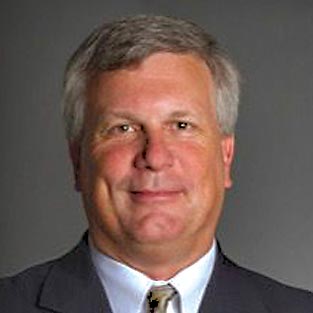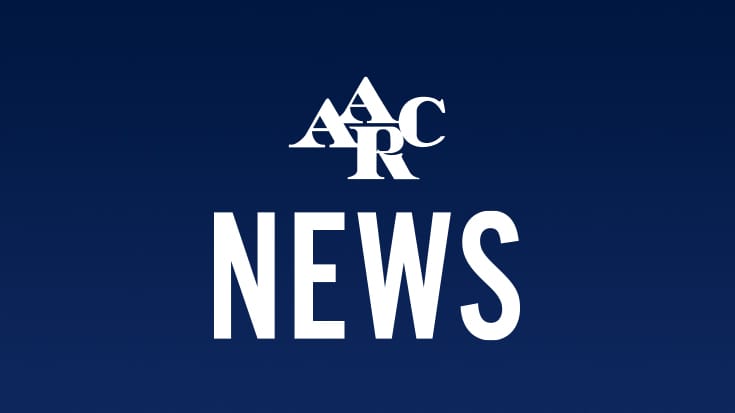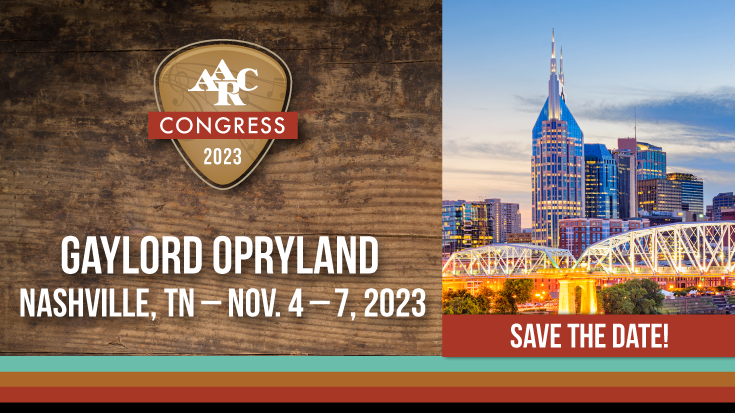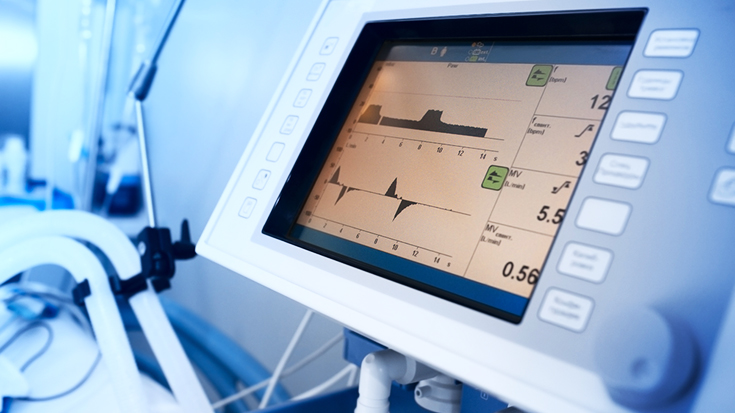
To understand Bob Kacmarek’s contribution to mechanical ventilation research and its application, you need to understand the devices and prevailing knowledge across his 50-year career. As recently chronicled by Dean Hess, PhD, RRT, FAARC, RESPIRATORY CARE Managing Editor, Bob began his career as an oxygen orderly in Chicago in 1965.1 At that time, he would have primarily seen Bird Mark Series ventilators, Puritan Bennett PR series, the original Emerson post-op ventilator and perhaps an Engstrom ventilator (the one that was flat and slid under the bed). Intermittent mandatory ventilation (IMV) was introduced shortly thereafter and being at Northwestern, training under Barry Shapiro, MD, Bob was exposed early to the application of positive end-expiratory pressure (PEEP). Despite the current state-of-the-art, clinicians continue to argue about how to set PEEP in 2021, early in Bob’s career, the argument was whether to add PEEP at all.
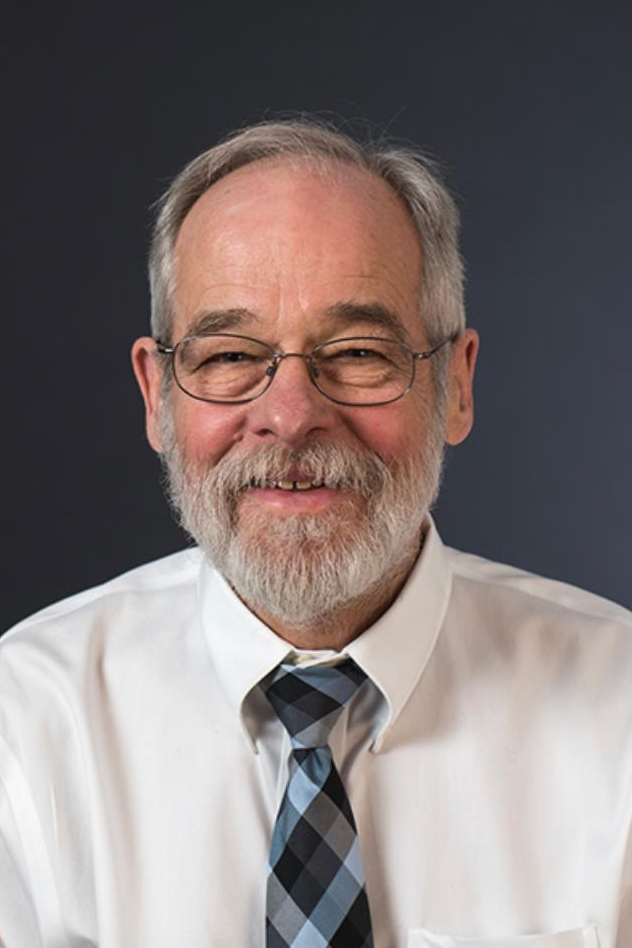 Robert M. Kacmarek, PhD, RRT, FAARC.
Robert M. Kacmarek, PhD, RRT, FAARC.As Dean noted, Bob’s first series of papers in RESPIRATORY CARE explored the use of PEEP valves for delivering PEEP or continuous positive airway pressures (CPAP) during mechanical ventilation and with spontaneous breathing.2-4 That topic was never far from his mind.
Bob’s interests were wide ranging, and his output was prolific. At the time of this writing, he has 330 publications listed in PubMed, including two in June, two months after his death. This of course does not include book chapters. He was dogged in his search for answers and often collaborated with authors from around the world. His move to Massachusetts General Hospital (MGH) in 1984 allowed him to collaborate with several world authorities on critical care and mechanical ventilation. Barry Shapiro was fond of saying whenever Bob’s success was mentioned that he had the best possible training available. One of Bob’s smartest moves was hiring Dean Hess as Assistant Director soon after his arrival at MGH. Another characteristic – management and selecting talent.
Within Bob’s body of work there are several themes that deserve mention and are of lasting significance. These were selected based on my reading of his publications and familiarity with his work, others may have different opinions. These include the bench study of ventilators and devices used in critical care. The optimum treatment of ARDS to include setting PEEP and the use of adjuncts (recruitment maneuvers, nitric oxide, high frequency ventilation, etc.). And more recently the importance, detection, and resolution of asynchrony. In the past decade, Bob and his colleagues studied the best methods for ventilating and setting PEEP in obese patients and how to wean them. Finally, a theme of Bob’s entire career, the role of the respiratory therapist in providing ventilatory support in the ICU to include the independent practice within an approved protocol and teaching of physicians and nurses on how to ventilate patients.
Bob collaborated on several bench studies including the response of ventilators to simulated patient effort, accuracy in delivering the set pressure and tidal volume as well as operation in the face of a leak. Bob refined bench studies, often using engineering input from the Massachusetts Institute of Technology and fellows from around the world, to automate measurements and add precision in the analysis. His bench studies included evaluations of nitric oxide delivery devices, non-invasive ventilation, specialty endotracheal tubes and delivery of helium during mechanical ventilation.5-16 One study that stands out is an evaluation of endotracheal tube fixation products, standardizing the force applied and direction of force required to ‘dislodge’ the tube.17 This study is a good example of how Bob and his colleagues elevated the science of bench studies.
Perhaps owing to his early training and first few publications, Bob pursued the use of PEEP in ARDS in conjunction with lung protective ventilation, recruitment maneuvers, use of esophageal manometry and other adjuncts.18-31 A number of these studies co-authored with Jesus Villar from Spain, challenged the status quo of the ARDSnet philosophy. (29-31) Bob was a fan of higher PEEP, recruitment maneuvers and the decremental PEEP trial. He never shied from a debate or a pro-con on the topic. I think this arose from his work with anesthesia faculty in the surgical intensive care unit with post-operative patients versus patients he might have encountered in the medical intensive care units with different pathophysiology. There is no doubt that Bob’s work enhanced our knowledge on these topics and challenged experts to re-think their stance on PEEP and ARDS.
Over the last decade, Bob collaborated on several investigations with Lluis Blanch and others from Sabadell University in Spain focusing on the detection of asynchrony during mechanical ventilation. This includes the evaluation of the BetterCare system to automatically identify the mode of ventilation as well as several common asynchronies (i.e., missed triggers, double triggers).32-38 I have no doubt that we will see the fruits of these labors come to fruition in the next generation of ventilators, alerting therapists to the presence of asynchrony and providing advice on potential resolutions.
In recent years, undoubtedly in response to changing demographics in the ICU, Bob and his MGH colleagues began to address the challenges of ventilating the morbidly obese patient. They evaluated the use of esophageal manometry for selection of PEEP and explored the importance of chest wall compliance in the era of lung protection. Using electrical impedance tomography, they demonstrated how PEEP, chest wall characteristics and obesity impact the distribution of ventilation. Finally, they devoted efforts to determine the best PEEP from which to conduct a spontaneous breathing trail in obese subjects and feel safe in extubating the patient. Obesity doesn’t appear to be waning around the world, these lessons will be important going froward as we address this difficult cohort.39-48
Following the passing of a legend in any field, the platitudes come from both friends and adversaries. In one aspect of his career, Bob was unapologetically dogmatic and often adversarial. Bob could not countenance those who sought to restrict the respiratory care profession. He was a ferocious supporter of a minimum bachelor’s degree entry into the profession long before it was popular and was adamant that respiratory therapists be professional in their conduct and in their knowledge. This is one of the few ‘political’ battles that Bob would lend his energies toward. He also wrote intently on the subject extolling the virtues of higher education and the respiratory therapist working as an advanced provider. A quick perusal of his work provides an extensive list of publications dedicated to moving the profession forward.49-55 Bob may have hurt some feelings along the way with his pursuit of this goal, but I know it didn’t bother him for a second. He was a champion of the profession, and the loss of his voice will be palpable in the respiratory therapy community.
I had the opportunity to co-author several papers with Bob and always learned from the experience. He dedicated himself to the task of authorship and was the first to show up and the last to leave. These are my observations hopefully easily supported by Bob’s impressive body of work. I hope we can pick up where we left off, it will take a village to carry the load.
References
- Hess DR. Loss of a legend: Remembering Robert M Kacmarek. Respir Care 2021;66(6):1016-1020.
- Kacmarek RM, Dimas S, Reynolds J. Technical aspects of positive end-expiratory pressure (PEEP): Part III. PEEP with spontaneous ventilation. Respiratory Care 1982;27(12):1505-1518.
- Kacmarek RM, Dimas S, Reynolds J, Shapiro BA. Technical aspects of positive end-expiratory pressure (PEEP): Part II. PEEP with positive-pressure ventilation. Respir Care 1982;27(12):1490-1504.
- Kacmarek RM, Dimas S, Reynolds J, Shapiro BA. Technical aspects of positive end-expiratory pressure (PEEP): Part I. Physics of PEEP devices. Respir Care 1982;27(12):1478-1489.(1)
- Kacmarek RM. The mechanical ventilator: past, present, and future. Respir Care. 2011;56(8):1170-80.
- Kacmarek RM, Meklaus GJ. The new generation of mechanical ventilators. Crit Care Clin. 1990;6(3):551-78.
- Kacmarek RM, Wilson RS. IMV systems. Do they make a difference? Chest. 1985;87(5):557.
- Marchese AD, Chipman D, de la Oliva P, Kacmarek RM. Adult ICU ventilators to provide neonatal ventilation: a lung simulator study. Intensive Care Med. 2009;35(4):631-8.
- Chipman DW, Caramez MP, Miyoshi E, Kratohvil JP, Kacmarek RM. Performance comparison of 15 transport ventilators. Respir Care. 2007;52(6):740-51.
- Chenelle CT, Fisher DF, Kacmarek RM, Berra L. Procedural Considerations on the Use of Polyurethane and/or Conical Cuffs. Am J Respir Crit Care Med. 2015;192(5):639-40.
- Chenelle CT, Itagaki T, Fisher DF, Berra L, Kacmarek RM. Performance of the PneuX System: A Bench Study Comparison With 4 Other Endotracheal Tube Cuffs. Respir Care. 2017;62(1):102-12.
- Chenelle CT, Oto J, Sulemanji D, Fisher DF, Kacmarek RM. Evaluation of an automated endotracheal tube cuff controller during simulated mechanical ventilation. Respir Care. 2015;60(2):183-90.
- Gianni S, Carroll RW, Kacmarek RM, Berra L. Inhaled Nitric Oxide Delivery Systems for Mechanically Ventilated and Nonintubated Patients: A Review. Respir Care. 2021;66(6):1021-8.
- Oto J, Chenelle CT, Marchese AD, Kacmarek RM. A comparison of leak compensation during pediatric noninvasive ventilation: a lung model study. Respir Care. 2014;59(2):241-51.
- Oto J, Chenelle CT, Marchese AD, Kacmarek RM. A comparison of leak compensation in acute care ventilators during noninvasive and invasive ventilation: a lung model study. Respir Care. 2013;58(12):2027-37.
- Oto J, Chenelle CT, Su Z, Sun MQ, Jiang Y, Kacmarek RM. Ventilation efficacy of video-laryngoscopes equipped with a ventilation feature. Respir Care. 2014;59(11):1636-42. (17-27)
- Fisher DF, Chenelle CT, Marchese AD, Kratohvil JP, Kacmarek RM. Comparison of commercial and noncommercial endotracheal tube-securing devices. Respir Care. 2014;59(9):1315-23.
- Caramez MP, Borges JB, Tucci MR, Okamoto VN, Carvalho CR, Kacmarek RM, et al. Paradoxical responses to positive end-expiratory pressure in patients with airway obstruction during controlled ventilation. Crit Care Med. 2005;33(7):1519-28.
- Ferguson ND, Chiche JD, Kacmarek RM, Hallett DC, Mehta S, Findlay GP, et al. Combining high-frequency oscillatory ventilation and recruitment maneuvers in adults with early acute respiratory distress syndrome: the Treatment with Oscillation and an Open Lung Strategy (TOOLS) Trial pilot study. Crit Care Med. 2005;33(3):479-86.
- Ferrando C, Mellado-Artigas R, Gea A, Arruti E, Aldecoa C, Adalia R, et al. Awake prone positioning does not reduce the risk of intubation in COVID-19 treated with high-flow nasal oxygen therapy: a multicenter, adjusted cohort study. Crit Care. 2020;24(1):597.
- Fujino Y, Kacmarek RM, Hess DR. Nitric oxide delivery during high-frequency oscillatory ventilation. Respir Care. 2000;45(9):1097-104.
- Kacmarek RM, Schwartz DR. Lung recruitment. Respir Care Clin N Am. 2000;6(4):597-623.
- Spina S, Capriles M, De Santis Santiago R, Florio G, Teggia-Droghi M, Grassi L, et al. Development of a Lung Rescue Team to Improve Care of Subjects With Refractory Acute Respiratory Failure. Respir Care. 2020;65(4):420-6.
- Villar J, Blanco J, Añón JM, Santos-Bouza A, Blanch L, Ambrós A, et al. The ALIEN study: incidence and outcome of acute respiratory distress syndrome in the era of lung protective ventilation. Intensive Care Med. 2011;37(12):1932-41.
- Villar J, Blanco J, Kacmarek RM. Current incidence and outcome of the acute respiratory distress syndrome. Curr Opin Crit Care. 2016;22(1):1-6.
- Villar J, Fernández RL, Ambrós A, Parra L, Blanco J, Domínguez-Berrot AM, et al. A clinical classification of the acute respiratory distress syndrome for predicting outcome and guiding medical therapy*. Crit Care Med. 2015;43(2):346-53.
- Villar J, Ferrando C, Kacmarek RM. Managing Persistent Hypoxemia: what is new? F1000Res. 2017;6:1993.
- Villar J, Kacmarek RM. What is new in refractory hypoxemia? Intensive Care Med. 2013;39(7):1207-10.
- Villar J, Kacmarek RM, Pérez-Méndez L, Aguirre-Jaime A. A high positive end-expiratory pressure, low tidal volume ventilatory strategy improves outcome in persistent acute respiratory distress syndrome: a randomized, controlled trial. Crit Care Med. 2006;34(5):1311-8.
- Villar J, Pérez-Méndez L, Basaldúa S, Blanco J, Aguilar G, Toral D, et al. A risk tertiles model for predicting mortality in patients with acute respiratory distress syndrome: age, plateau pressure, and P(aO(2))/F(IO(2)) at ARDS onset can predict mortality. Respir Care.2011;56(4):420-8.
- Villar J, Sulemanji D, Kacmarek RM. The acute respiratory distress syndrome: incidence and mortality, has it changed? Curr Opin Crit Care. 2014;20(1):3-9.
- Blanch L, Sales B, Montanya J, Lucangelo U, Garcia-Esquirol O, Villagra A, et al. Validation of the Better Care® system to detect ineffective efforts during expiration in mechanically ventilated patients: a pilot study. Intensive Care Med. 2012;38(5):772-80.
- Blanch L, Villagra A, Sales B, Montanya J, Lucangelo U, Luján M, et al. Asynchronies during mechanical ventilation are associated with mortality. Intensive Care Med. 2015;41(4):633-41.
- de Haro C, López-Aguilar J, Magrans R, Montanya J, Fernández-Gonzalo S, Turon M, et al. Double Cycling During Mechanical Ventilation: Frequency, Mechanisms, and Physiologic Implications. Crit Care Med. 2018;46(9):1385-92.
- Kacmarek RM, Villar J, Blanch L. Cycle asynchrony: always a concern during pressure ventilation! Minerva Anestesiol. 2016;82(7):728-30.
- Marchuk Y, Magrans R, Sales B, Montanya J, López-Aguilar J, de Haro C, et al. Predicting Patient-ventilator Asynchronies with Hidden Markov Models. Sci Rep. 2018;8(1):17614.
- Sousa M, Magrans R, Hayashi FK, Blanch L, Kacmarek RM, Ferreira JC. Clusters of Double Triggering Impact Clinical Outcomes: Insights From the EPIdemiology of Patient-Ventilator aSYNChrony (EPISYNC) Cohort Study. Crit Care Med. 2021.
- Sousa MLA, Magrans R, Hayashi FK, Blanch L, Kacmarek RM, Ferreira JC. EPISYNC study: predictors of patient-ventilator asynchrony in a prospective cohort of patients under invasive mechanical ventilation – study protocol. BMJ Open. 2019;9(5):e028601.
- De Santis Santiago R, Teggia Droghi M, Fumagalli J, Marrazzo F, Florio G, Grassi LG, et al. High Pleural Pressure Prevents Alveolar Overdistension and Hemodynamic Collapse in ARDS with Class III Obesity. Am J Respir Crit Care Med. 2020;203(5):575-84.
- Florio G, Ferrari M, Bittner EA, De Santis Santiago R, Pirrone M, Fumagalli J, et al. A lung rescue team improves survival in obesity with acute respiratory distress syndrome. Crit Care. 2020;24(1):4.
- Fumagalli J, Berra L, Zhang C, Pirrone M, Santiago RRS, Gomes S, et al. Transpulmonary Pressure Describes Lung Morphology During Decremental Positive End-Expiratory Pressure Trials in Obesity. Crit Care Med. 2017;45(8):1374-81.
- Fumagalli J, Santiago RRS, Teggia Droghi M, Zhang C, Fintelmann FJ, Troschel FM, et al. Lung Recruitment in Obese Patients with Acute Respiratory Distress Syndrome. Anesthesiology. 2019;130(5):791-803.
- Grassi L, Kacmarek R, Berra L. Ventilatory Mechanics in the Patient with Obesity. Anesthesiology. 2020;132(5):1246-56.
- Imber DA, Pirrone M, Zhang C, Fisher DF, Kacmarek RM, Berra L. Respiratory Management of Perioperative Obese Patients. Respir Care. 2016;61(12):1681-92.
- Kacmarek RM, Villar J. The chest wall: the all too commonly forgotten cause of pulmonary dysfunction*. Crit Care Med. 2012;40(7):2258-9.
- Pirrone M, Fisher D, Chipman D, Imber DA, Corona J, Mietto C, et al. Recruitment Maneuvers and Positive End-Expiratory Pressure Titration in Morbidly Obese ICU Patients. Crit Care Med. 2016;44(2):300-7.
- Zhang C, Pirrone M, Imber DA, Ackman JB, Fumagalli J, Kacmarek RM, et al. Optimization of Mechanical Ventilation in a 31-Year-Old Morbidly Obese Man With Refractory Hypoxemia. A A Case Rep. 2017;8(1):7-10.
- Teggia Droghi M, De Santis Santiago RR, Pinciroli R, Marrazzo F, Bittner EA, Amato MBP, et al. High Positive End-Expiratory Pressure Allows Extubation of an Obese Patient. Am J Respir Crit Care Med. 2018;198(4):524-5.
- Barnes TA, Gale DD, Kacmarek RM, Kageler WV. Competencies needed by graduate respiratory therapists in 2015 and beyond. Respir Care. 2010;55(5):601-16.
- Barnes TA, Kacmarek RM, Durbin CG, Jr. Survey of respiratory therapy education program directors in the United States. Respir Care. 2011;56(12):1906-15.
- Kacmarek RM. Mechanical ventilation competencies of the respiratory therapist in 2015 and Beyond. Respir Care. 2013;58(6):1087-96.
- Kacmarek RM. The present and future roles of the perinatal respiratory care practitioner. Respir Care. 1986;31(6):516-23.
- Kacmarek RM, Barnes TA, Durbin CG, Jr. Survey of directors of respiratory therapy departments regarding the future education and credentialing of respiratory care students and staff. Respir Care. 2012;57(5):710-20.
- Kacmarek RM, Durbin CG, Barnes TA, Kageler WV, Walton JR, O’Neil EH. Creating a vision for respiratory care in 2015 and beyond. Respir Care. 2009;54(3):375-89.
- Kacmarek RM, Walsh BK. The Respiratory Therapy Profession Is at a Crossroads. Respir Care. 2017;62(3):384-6.
Email newsroom@aarc.org with questions or comments, we’d love to hear from you.

